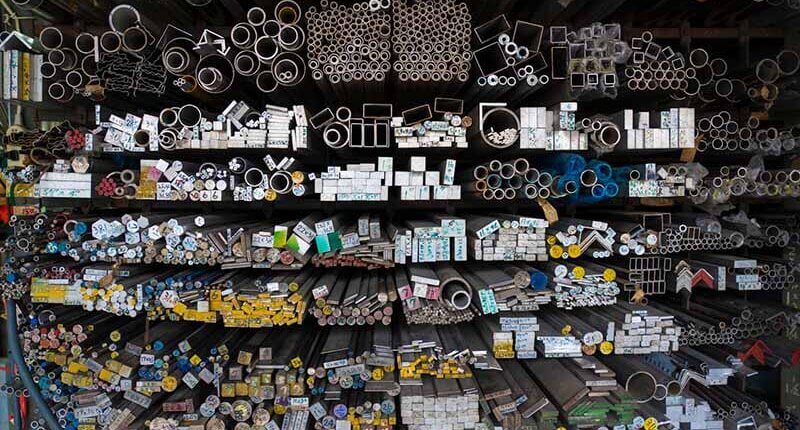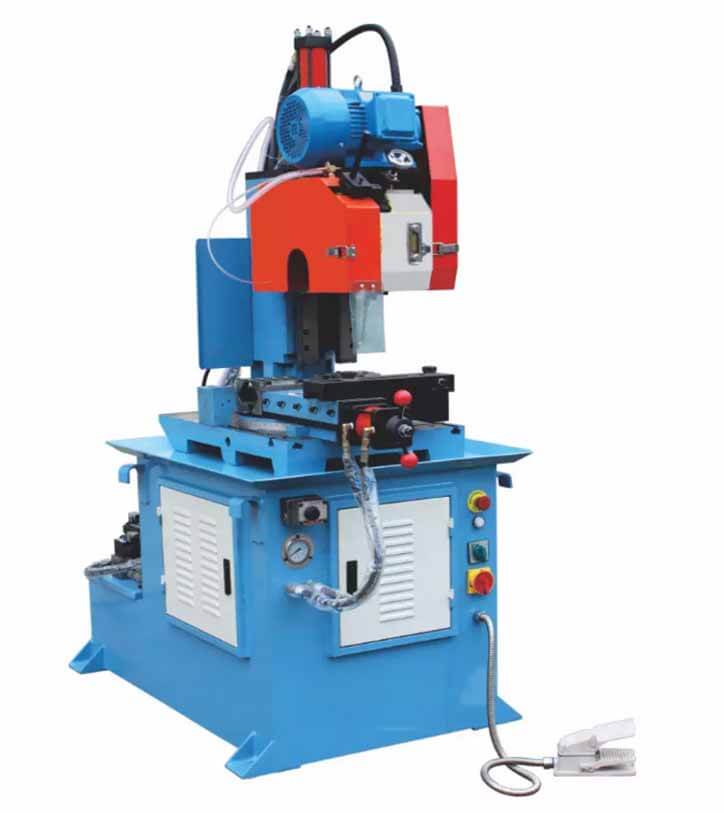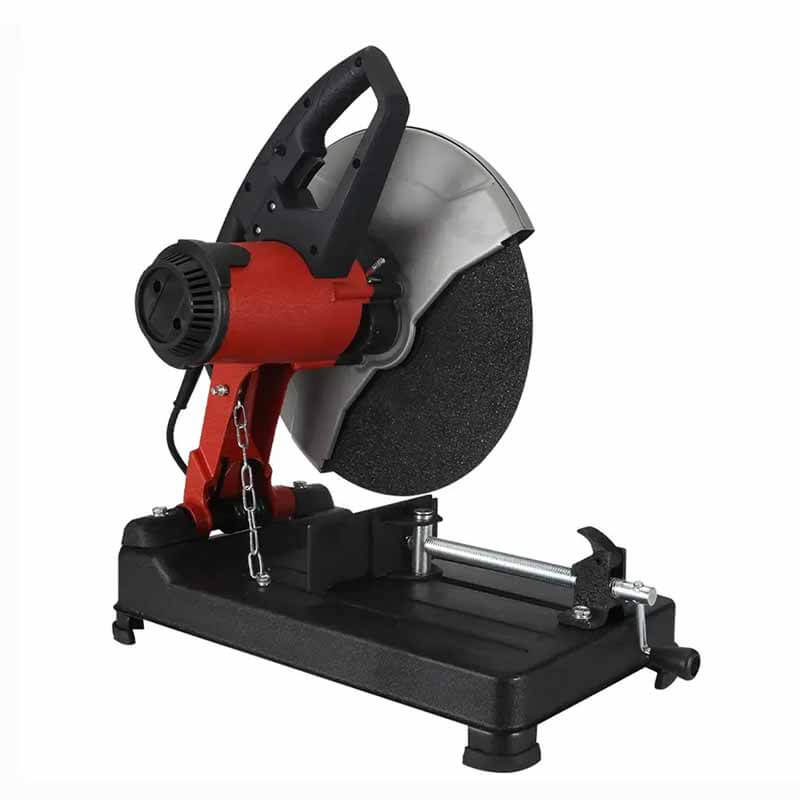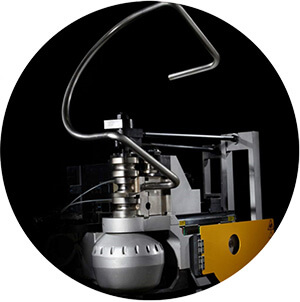Best Way to Cut Stainless Steel Tube

Stainless steel tube is an indispensable part of various industries due to their durability and corrosion resistance. However, due to its hardness and strength, cutting stainless steel tube can be a very challenging task. Either the cutting tool is damaged, or the cutting result is bad, or even personal injury occurs. So, today let’s take a look at the common types on the market so that you can choose the most suitable stainless steel tube cutting machine according to your actual needs.
Properties of Stainless Steel Tube
Before choosing the proper stainless steel tube cutter, we have to know the properties of stainless steel tube, so that we can know what challenges we will face while cutting them.
Durability
Stainless steel tube is famous for its strength and toughness, so this material is widely used in application that requires high durability. But, this property also makes it resistant to cutting, its toughness will lead to excessive wear on cutting tools and reduce their lifespan.
Corrosion Resistance
The stainless steel tube is also resistant to corrosion and rust, due to the layer of chromium oxide on the surface. However, the chromium oxide layer will also add difficulty for cutting, so you will need a specialized blade to cut the material without compromising the quality of the cut.
Hardness
The hardness of stainless steel tube makes it different from other metal tubes, its hardness makes this material hard to cut. In order to ensure smooth and efficient cutting for this material, you will need high-quality, hardened blades or advanced cutting methods to achieve precise cutting.
Main Types of Stainless Steel Tube Cutting Machine
There are a few types of equipment to cut stainless steel tube on the market, let’s take a look at who they are and their features.
Hacksaw
Hacksaw is a fine-toothed saw that can be used to cut metal, and also includes the stainless steel tube. This tool is cheap, easy to use, and doesn’t need any power, but using it to cut stainless steel tube will require more effort and the cutting edge can be rough with burr. The hacksaw is suitable for applications that don’t need high working efficiency and a smooth cutting edge.
Ratcheting Tubing Cutter
Ratcheting tubing cutter can cut cleaner than a hacksaw, but it is only suitable for small-diameter stainless steel tube and small-scale cutting job.
Angle Grinder
Angle grinder is suitable for cutting thick metal tube, but be attention when using this tool, you must wear gloves, goggles, and ear protection to ensure the protection is in place.
Chop Saw
Chop saw can cut faster, smoother, and more precise than the above cutting tools, it is less portable, requires power, and can produce sparks and heat. This cutting tool is suitable for cutting medium-scale projects in the workshop, with a proper cutting blade, you can use it to cut various metal materials.
Band Saw
You can choose the cutting blade that is suitable to cut stainless steel pipe, then secure the pipe, set the proper blade tension and speed, then start to cut. Depending on the type of band saw you choose, it can be used in different scale projects.
Plasma Cutter
This machine is suitable for cutting intricate shapes or thick tubes and uses an electric arc and compressed gas to create a plasma jet that melts and cuts through metal. Using this machine can achieve quick and precise cutting, but you need to wear a full set of protective clothing.
Laser Cutting Machine
This machine provides the highest precision and cleanest cuts among all the stainless steel tube cutting machines. But, the cost of this machine is also the highest, suitable for large-scale projects or high-precision projects.
Cold Saw
Cold saw for metal is very suitable for cutting large volumes of tubes with high precision, widely used in the workshop and industrial environment. This machine uses the circular saw blade to cut the metal tube at a low speed to minimize heat buildup. The cutting result is clean and precise, and cold saw blades can last longer than other blades.
Interested in circular saw blades? Contact us today!
Abrasive Saw
The abrasive saw is used to cut tough materials quickly, the cutting blade is generally made of aluminum oxide or silicon carbide. This machine is suitable for the cutting task where speed is more important than precision.
Above are the main methods of metal tube cutting, including the stainless steel tube. Each of them has advantages and disadvantages. For example, if you want to cut stainless steel tube for a large project, the cold metal cutting saw is the best for you, you just need to choose a different type: pneumatic, hydraulic, or CNC according to your specific request. If you just want to cut a few pieces of small diameter tube, the ratcheting tubing cutter is enough for your needs.

Step-by-Step Guide on How to Cut Stainless Steel Tube
After understanding the commonly used stainless steel tube cutting methods on the market, let’s take a brief look at how to cut them step by step.
Preparation You Need to Do Before Cutting
- Use a measuring tape or calipers to measure the exact length of the cutting.
- Use a fine-tip marker to mark the cutting line for precision cutting.
- After marking, you should double-check the marked length.
- Find a workplace for safety and efficiency cutting tasks.
- Move any clutter or obstacles within the working area.
- You will need tools, clamps, or vises to fix the tube on the machine workbench.
- Prepare the safety gear, such as gloves, goggles, ear protection, long sleeves, and a dust mask.
- Choose a suitable stainless steel tube cutting machine.
Cutting Techniques of Different Tools/Machines
After preparation, let’s have a look at how to cut stainless steel tube on each different tool/machine and also with some precautions.
Hacksaw Method
- Secure the stainless steel tube with a vise or clamp.
- Align the hacksaw blade with the cutting line marked on the tube.
- Cut the tube smooth, and stable with even pressure.
- Keep the blade perpendicular to the tube to avoid uneven cuts.
- Continue sawing until the tube is completely cut through.
Please note, that using a fine-toothed blade can make a cleaner cut, and using lubricant can make the cutting process smoother.
Angle Grinder Method
- Choose the appropriate cutting blade for tube material and size.
- Mark the cutting line and secure the tube.
- Align the disc with the marked line and start the grinder.
- Apply even pressure while cutting.
- Stop the grinder once the cutting is finished.
Please note, that you should wear the safety gear before working the grinder, using the appropriate disc is very important to excuse the work.
Chop Saw Method
- Choose the suitable saw blade for the chop saw.
- Mark the cutting line on the stainless steel tube.
- Fix the tube, align the saw blade with the marked line, and start the saw.
- Slightly put the blade on the tube and let it cut through.
- Once the cutting is finished, release the blade and turn off the saw.
Please note to use a slow, steady feed rate to prevent overheating.
Band Saw Method
- Mark the cutting line on the tube and choose the bi-metal blade designed for stainless steel material.
- Adjust the blade tension and cutting speed.
- Align the blade with the marked line.
- Start the saw and feed the tube into the saw at a consistent feed speed.
You need to check blade tension and sharpness regularly, clean the saw, and remove metal shavings after each use.
Plasma and Laser Cutting
- Set the plasma or laser cutter according to the manufacturer’s instructions.
- Fix the tube and mark the cutting line.
- Align the cutting head with the marked line.
- Start the cutting machine and move it along the line.
- Continue the cutting till it is finished.
You need to wear protective gear before working, maintain good ventilation, and avoid breathing fumes.
Cold Saw Method
- Choose the stainless steel tube saw blade for the cold saw.
- Mark the cutting line on the tube.
- Align the blade with the marked line and start the saw.
- Slightly lower the blade on the tube and cut.
- Release the saw blade once the cutting is finished.
You need to regularly check the saw blade for any wear, you need to replace a new one to maintain the cutting efficiency or use the saw blade sharpening machine to sharpen the blade. Use coolant to reduce the heat and extend the blade life.

Abrasive Saw Method
- Marke the cutting line on the tube.
- Choose the appropriate abrasive disc.
- Align the disc with the marked line and start the saw.
- Apply the pressure to cut the tube.
- Turn off the saw and remove the tube.
Wear protective gear before working, and don’t apply too much pressure.
Troubleshooting Common Issues
There are 2 common issues that happen with tube cutting: uneven cuts and overheating, let’s take a look at the causes and solutions.
- Cause: Dull Blade
- Solution: Regular check and blade and ensure the cutting blade is sharp.
- Cause: Incorrect Blade Type
- Solution: Use the appropriate blade type for the material. For example, you can not use the same blade to cut stainless steel tube and aluminum tube.
- Cause: Improper Cutting Technique
- Solution: Maintain a steady hand and consistent pressure while cutting. Don’t force the tool through the cutting material, the tool will do the job itself.
- Cause: Inadequate Support for the Tube
- Solution: Properly secure the tube to prevent movement during cutting.
- Cause: Overfeeding the Material
- Solution: Use a steady, controlled feed rate to avoid pushing the material too quickly.
- Cause: Insufficient Blade Clearance
- Solution: Adjust the blade tension and alignment as needed to ensure the blade has enough clearance.
- Cause: Inadequate Cooling or Lubrication
- Solution: Use cutting fluids or coolants to reduce heat buildup.
As we can see, there many ways to cut stainless steel tube, using which tooling or equipment depends on your specific request. For industrial use, if you want to cut too many tubes with good cutting performance, The most cost-effective option is a cold cutting metal saw. If you just cut a few pieces and don’t focus on consistent smooth cutting, a hacksaw or an angle grinder is enough.
You may also interested in:
The ultimate guide to choosing cold saw blades

Denis Lau
Denis Lau has 20 years of work experience in the metal processing industry. His major in university was mechanical engineering, and after graduation, he started from the bottom of the workshop, gaining extensive hands-on professional experience and the ability to tackle challenges from various industries.


